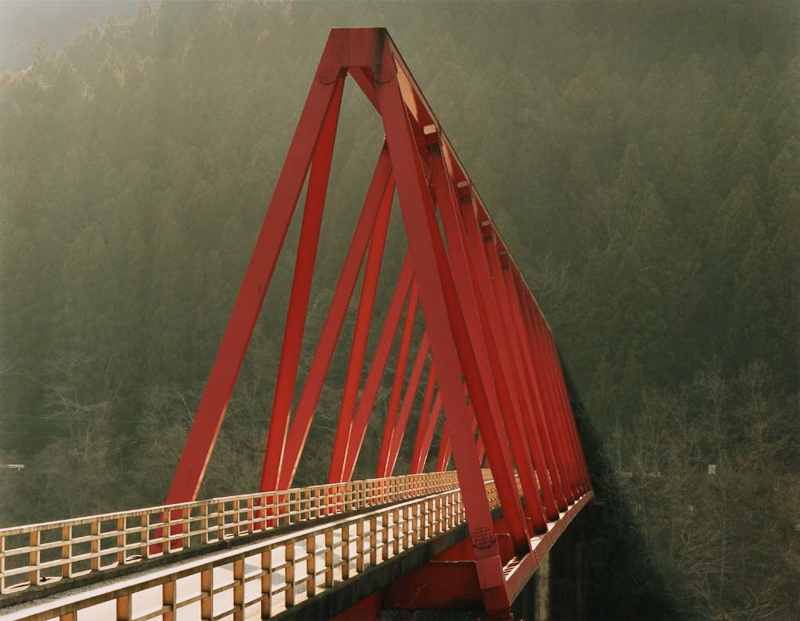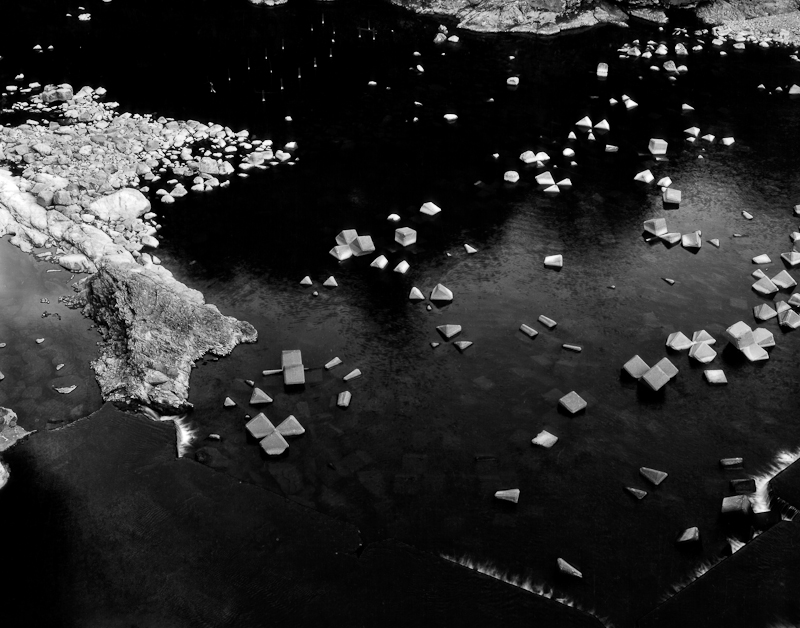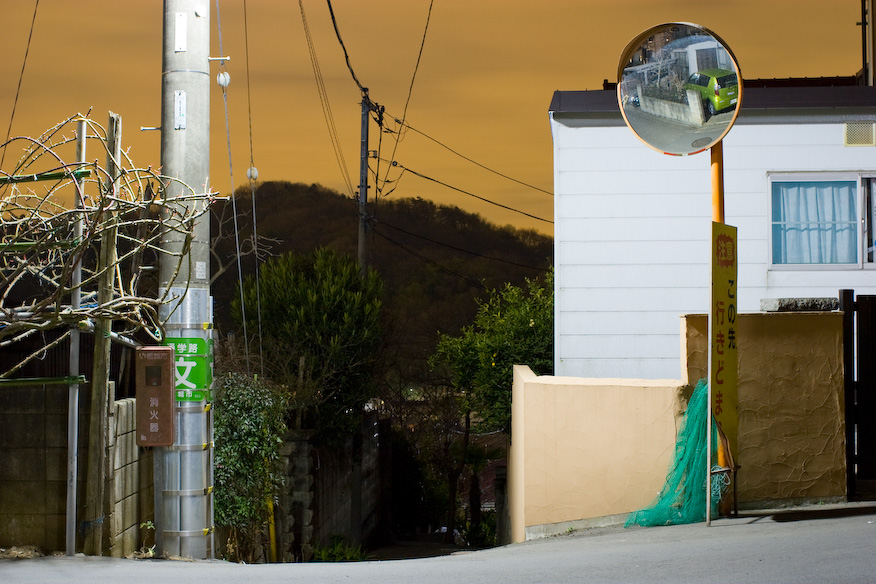After a lengthy blogging absence, Ferdinand Brueggeman has just posted an interview that he did for FOAM magazine with the curator and photo-historian, Mariko Takeuchi. Essential reading.
Koji Onaka
Koji Onaka and his camera have been wandering around Japan—and sometimes further afield—for many years. In his 2007 book, Dragonfly, he writes:
"People often say to me, 'You're lucky that all you have to do is to go to places you like whenever you feel like it and when you're done taking photos as you stroll around, you can spend the rest of your time sitting back and drinking.' I agree with them 100 percent. I myself wonder how I can make a living from taking such useless photos as mine.
They are not astonishing scenes, nor are they taken with superb timing. They do not convey mistifying sensations or intense impressions. They do not have healing effects, but neither do they push away viewers. They are not difficult to understand, but they do not provide any definite answers. Much less are they stories or documentaries."
I think there is something very Japanese about Onaka's description of his photography. He does not feel the need to have a project, he isn't searching for the extraordinary, and I think he is sincere in his reductive description of his process. His words do not sell his images, quite the contrary. But the naturalness of his photographs is a quality that is very hard to achieve. I think this incredibly unselfconscious description could be considered an artist statement.
There is a lot of great work on his website, but unfortunately the scans of his colour images are less than perfect. I would suggest trying to get your hands on Dragonfly 2002-2007 (Tokyo: Tosei-Sha 2007) and its earlier companion volume Grasshopper 2001-2005 (Tokyo: Tosei-sha, 2006) to get a sense of his unique use of colour. For those of you who will be in Paris in the next few months, his work will also be included in a forthcoming group show at the Maison de la Culture du Japon (Japan Foundation) from October 2009 to January 2010.
Ryuji Miyamoto
Ryuji Miyamoto is best known for his work on architecture, and, more often than not, on its destruction. With his series Pinhole, he had departed somewhat from his previous work by building his own pinhole hut in which he climbs to make his exposures of landscapes. He will be showing new work at Tokyo's Taro Nasu Gallery next month and judging by the image above, it looks like he has taken a very different direction with his latest series, The Grass, Bugs and Sea. I'm looking forward to seeing more.
Interview with Toshio Shibata
The following is an extract from an interview that I did with Toshio Shibata at his studio in Naka-Meguro, Tokyo in May 2008. Shibata recently held his first retrospective at the Tokyo Metropolitan Museum of Photography and published Landscape 2 (Nazraeli Press), an excellent collection of his colour photographs.
Marc Feustel: You studied painting and print-making before you became a photographer. Can you tell me how you came to adopt photography as your medium and how your studies affected your approach to taking photographs?
Toshio Shibata: At university, in 1968, I was studying painting. I was learning very classic things: charcoal drawings, oil paintings. During that year with the political upheaval in Japan everything was changing. Because of the student riots they shut down my university and there were no classes. This made me think that it was time to try something new. I came across the work of Robert Rauschenberg and Andy Warhol who were making silkscreen prints using photographic images, which I was very attracted to. What attracted me initially was the simplicity and directness of this process compared to the difficulty of painting exact figurative images. Many art forms require you to practice constantly in order to be able to make a simple figurative image. With photography, if you want a picture of a particular thing, you just have to take it. So my first experiences in photography involved making silkscreen process using photographic images. I am very interested in the print-making process and I tried many different processes…woodcuts, copper etchings.
MF: You also studied at the Royal Academy of Art in Ghent. Did this European artistic education have a big influence on your approach as a photographer?
TS: After finishing university in Japan and working for one year, I got a scholarship to the Royal Academy of Ghent in Belgium. When I arrived at the art school the director suggested that I study photography given my previous studies of oil painting and print-making. While I was in Ghent, I made a trip to Paris where I visted the Zabriskie Gallery, just in front of the Pompidou Center. At the time there was a show on called The American West: One Hundred Years of Landscape Photography (1978) which included work by the Group f/64 artists like Ansel Adams and other West Coast artists.
I already had the sense that I wanted to work with photography but at the time in the 1970s the Japanese photographic scene was very different to my sensibilities. It was based around social protest with photographers like Daido Moriyama. After seeing the American West show, I felt that I had discovered an approach that suited me. So in 1979 I had finally found my medium: photography.
Although I knew the technical processes of taking photographs and making prints, at the time I knew very little about photographic history. I bought Ansel Adams’ Zone System and a large format camera and started working. Before this I had been working mainly indoors in a studio, with drawing and print-making. With photography I found myself free to go out into the world, to take a car and to be able to go anywhere… that was a very important to me.
When I saw American West, one of the gallerists showed me additional work, including prints by Edward Weston and Joel Meyerowitz’s colour prints. Meyerowitz’s c-prints were a real shock to me. The paper was very ordinary, half-matt, very conventional paper, the kind of paper that was used for amateur snapshots. Although I didn’t shoot in colour for many years, that left a deep impression on me. For me the availability of photographic materials was crucial. It made photography a much more accessible medium than painting or sculpture.
MF: You have said that it is impossible to “suppress yourself as a Japanese” when you photograph. Can you explain what this ‘Japaneseness’ means to your work? How did your exposure to Western photography and art influence your approach?
TS: As a student in my 20s in Europe I was able to see Japan from the outside for the first time: something that I had been interested in for a long time. But when I was in Europe I found taking photographs difficult. Everything was so different and too photogenic. Nothing connected deeply with me. With painting you can break away from this, because you can use your imagination. I wasn’t mature enough as an artist then, so I decided to come back to Japan to make a living and I thought that there I might be better able to take photographs. But when I came back to Tokyo I felt that there was too much chaos. I was trying to find something common, like a highway, something that is the same all over the world. Many times I found that while driving in Belgium I could have been in Japan. I wanted to use this sensation in my work, so I started taking night photographs on highways. Bit by bit, I started working and travelling around Japan.
Before I went to Belgium I had travelled very little in Japan and knew very little about my country. It was travelling around Japan that I finally found my subject: infrastructure. I tried to find something that had never been seen as a photographic subject: the kind of thing that photographers try to eliminate from their images. With painting you can choose what elements to include in a scene, but this is not the case with photography: everything gets included. This distinction between painting and photography was important to me in developing my photographic approach. I felt that technique was not what defined a photographer, but the ability to find a new subject.
MF: You have just finished your Landscape 2 book of colour work. I’d like to know a bit more about how you shifted from black and white to colour photography?
TS: I have been shooting in colour for many years, since I began working as a photographer really, but I preferred black and white and I chose not to show my colour work. Aside from very practical considerations, after shooting in black and white for twenty years, I felt it was high time for me to change to take on a new challenge. I have been showing my colour work now for four years and since 2004 I have been concentrating on shooting in colour. For the first two years I shot in both black and white and in colour, but for the last two years I have been shooting almost exclusively in colour. I chose to concentrate on colour since I had decided to do a book of colour work (Landscape 2, Portland: Nazraeli Press, 2009).
MF: How has moving to colour photography changed the way that you work?
TS: As I said, for the first two years I was shooting both in black and white and colour. Then I realised that everything is different in colour and black and white. With black and white, I just converted colour to tone and gradation. Of course with colour this isn’t necessary: you see things as they are. It took me some time to fully understand this distinction and for a long time I didn’t show my colour work. I didn’t really know the meaning of ‘colour’ in photography. Because I decided to make a book of colour photography, I switched completely to colour and through the process of making the book I realised that there is no special way to see things in colour, you just need to allow yourself to look.
For me colour photography is about atmosphere, whereas with my black and white work I was focused on shape and tonality. In my black and white work by combining those elements of shape and tonality, photography was able to create a different world. I tried to create scenes that people had never seen before. With colour photography the process is more casual, looser. I try to capture an atmosphere.
In terms of the subject matter I go to the same kind of places. Actually the landscapes that I shoot change very rapidly. Within one year a landscape can change completely because of the climate. Japan is a very small country and when you travel to a destination you don’t have many choices about how to get there so I often travel the same roads.
MF: You seem to aim to create photographs that are not rooted in a specific time or place, a specific ‘now’. Your photographs seem often to be outside time in some way.
TS: I take a lot of photographs and show very few. If there is too much reality, too much identifiable sense of time and place, I don’t show these images. I have taken around 4,000 plates with my 8 x 10 camera and of those I show about one percent. I try to eliminate the reality, time and any sense of specific place. Of course this is extremely difficult with photography. Within a frame there are so many elements that are present and you cannot choose those that you want to keep and those that you want to eliminate. The only elements that you can control are contrast and tonality, light essentially. With painting all the ‘unnecessary’ parts in a scene can be eliminated. With photography, you just have to accept what is there. That is where the difficulty of photography lies. Photography is not something that you can make. It cannot be forced. You have to accept the subject.
Tomoyuki Sakaguchi
A Hollywood lighting crew get lost in Japanese suburbia and decide to set up on an anonymous street corner or in someone's back yard? However he gets his orange and purple skies, hyper-green hedges and rabbit-in-the-headlights surburbscapes, Tomoyuki Sakaguchi's long exposures of street-lit suburbia have a great sense of missplaced drama.





